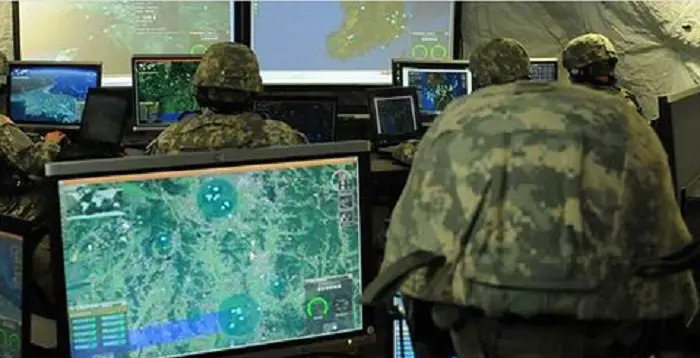The U.S. Army awarded Northrop Grumman Corporation a $60.6 million contract on October 11 for continued work on the Integrated Air and Missile Defense (IAMD) Battle Command System (IBCS) program.
Northrop Grumman’s Integrated Air and Missile Defense (IAMD) Battle Command System (IBCS) integrates all available sensors, enhancing survivability through eliminating vectors of attack and expanding the area of protection.
This contract enables ongoing support for engineering, logistics, integration, test and evaluation, training and program management as IBCS progresses through the design and development phase in preparation for fielding. This work supports an upcoming IBCS Limited User Test (LUT), which will start in second quarter 2020, and leads into a Milestone C decision expected in third quarter 2020.
“In partnership with our Army customer, we have demonstrated through numerous tests and exercises that IBCS performs exceptionally well in realistic and increasingly complex operational environments,” said Dan Verwiel, vice president and general manager, missile defense and protective systems, Northrop Grumman. “IBCS is mature and well positioned for both the LUT and a successful Milestone C decision.”
IBCS is the cornerstone of the Army’s IAMD modernization program. The ability of IBCS to network all available sensors and interceptors enhances battlefield survivability by providing redundancy, cyber resiliency and eliminating vectors of attack.
IBCS further enhances survivability by allowing air defenders to have a broader view of the battlespace. IBCS integrates and fuses data from disparate sensors into a single integrated air picture with unprecedented accuracy. Networked operations enabled by IBCS expand the area of protection and allow action to be taken against threats at greater ranges.
IBCS successfully demonstrated this advanced beyond-line-of-site, engage-on-net capability in an August flight test, where a combination of Patriot and Sentinel radars connected over the IBCS Integrated Fire Control Network were used to detect and intercept a low-flying cruise missile target using a Patriot Advanced Capability-3 (PAC-3) interceptor. This was the farthest ever intercept by a PAC-3 air defense missile.
IBCS has been further validated through a series of exercises, checkout events and training activities conducted by U.S. Army soldiers.
IBCS is managed by the U.S. Army Program Executive Office for Missiles and Space at Alabama’s Redstone Arsenal. Work under this latest contract will be performed by Northrop Grumman in Huntsville, with an estimated completion in 2021.
Northrop Grumman is a leading global security company providing innovative systems, products and solutions in autonomous systems, cyber, C4ISR, space, strike, and logistics and modernization to customers worldwide.
















